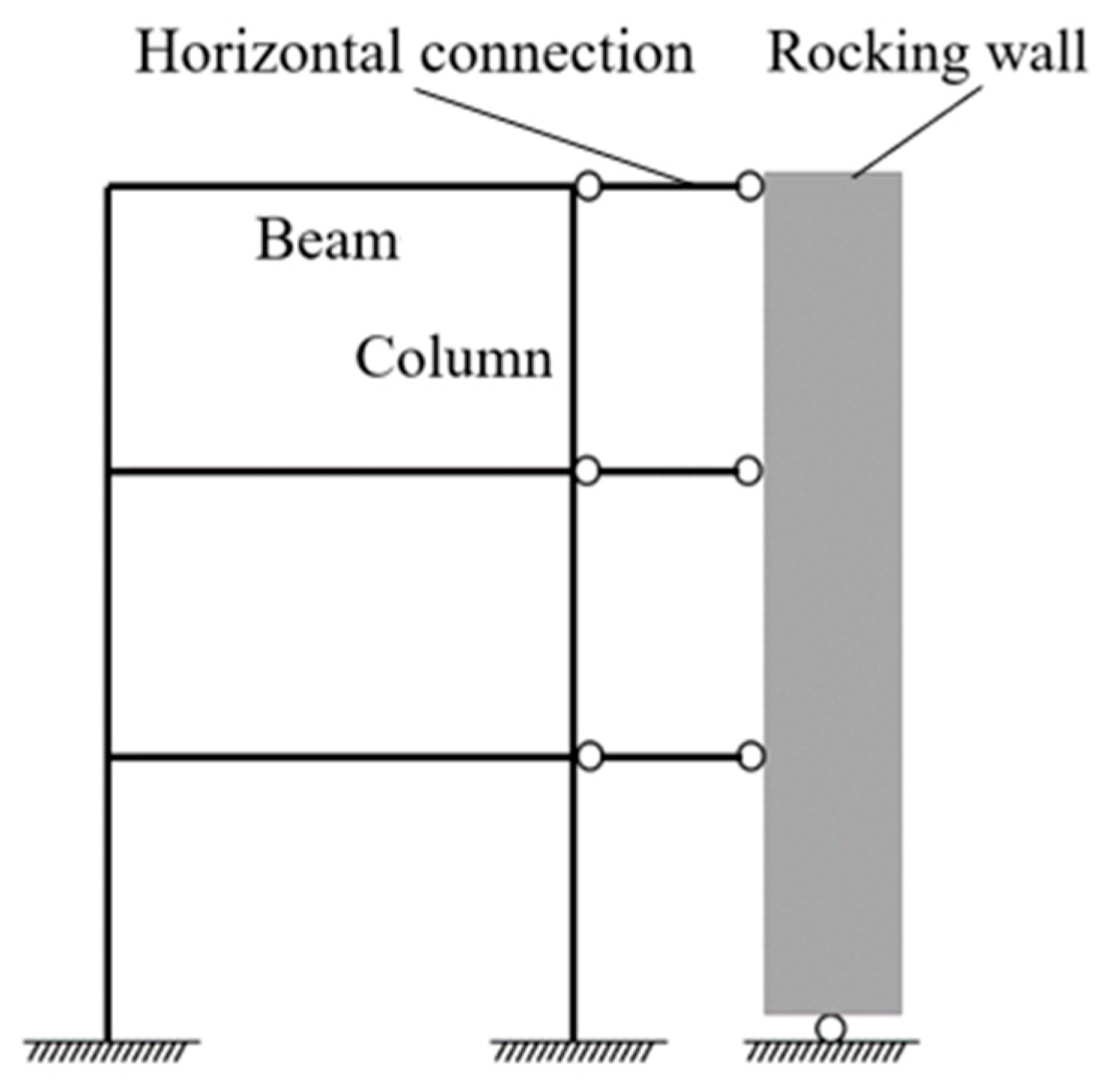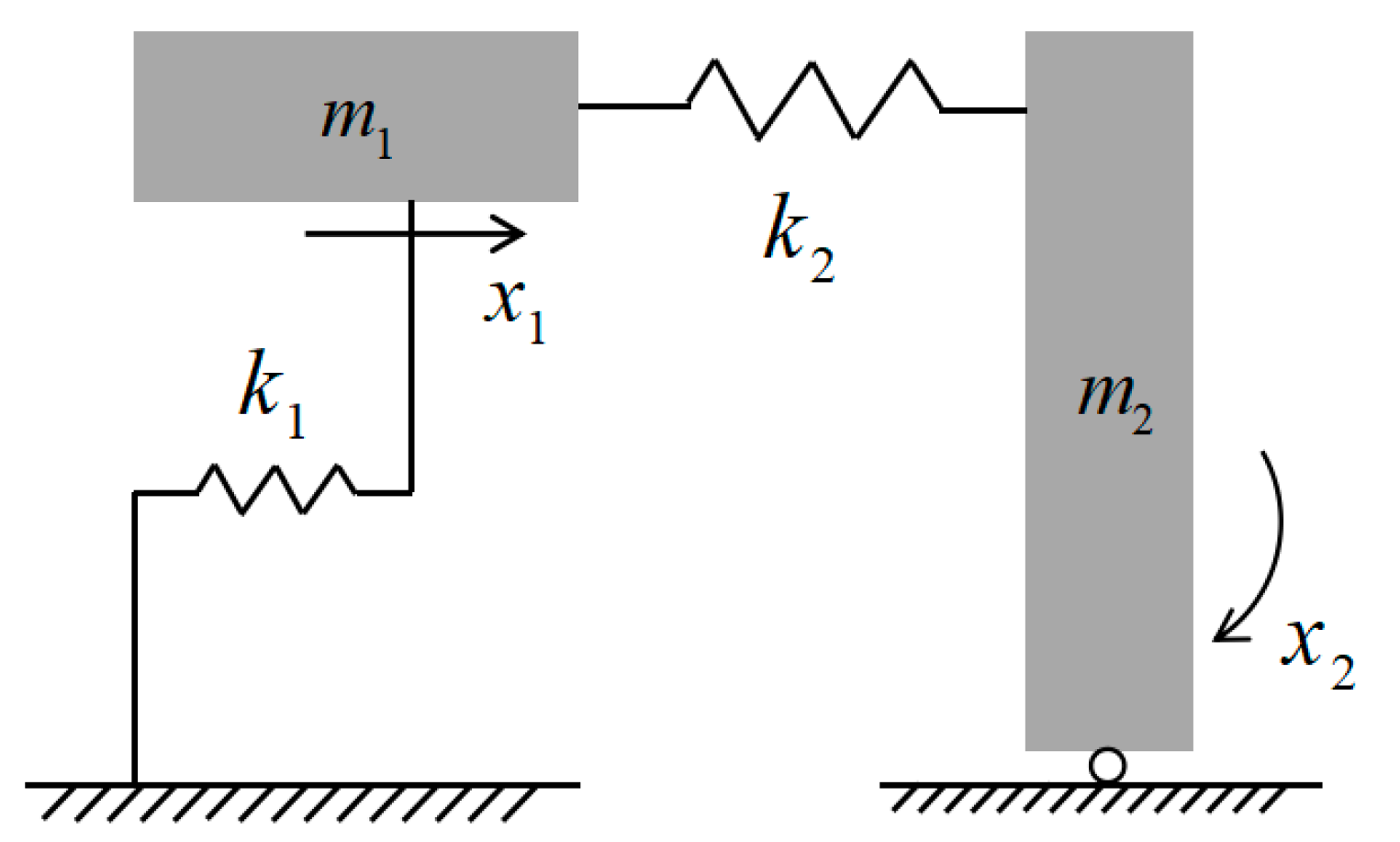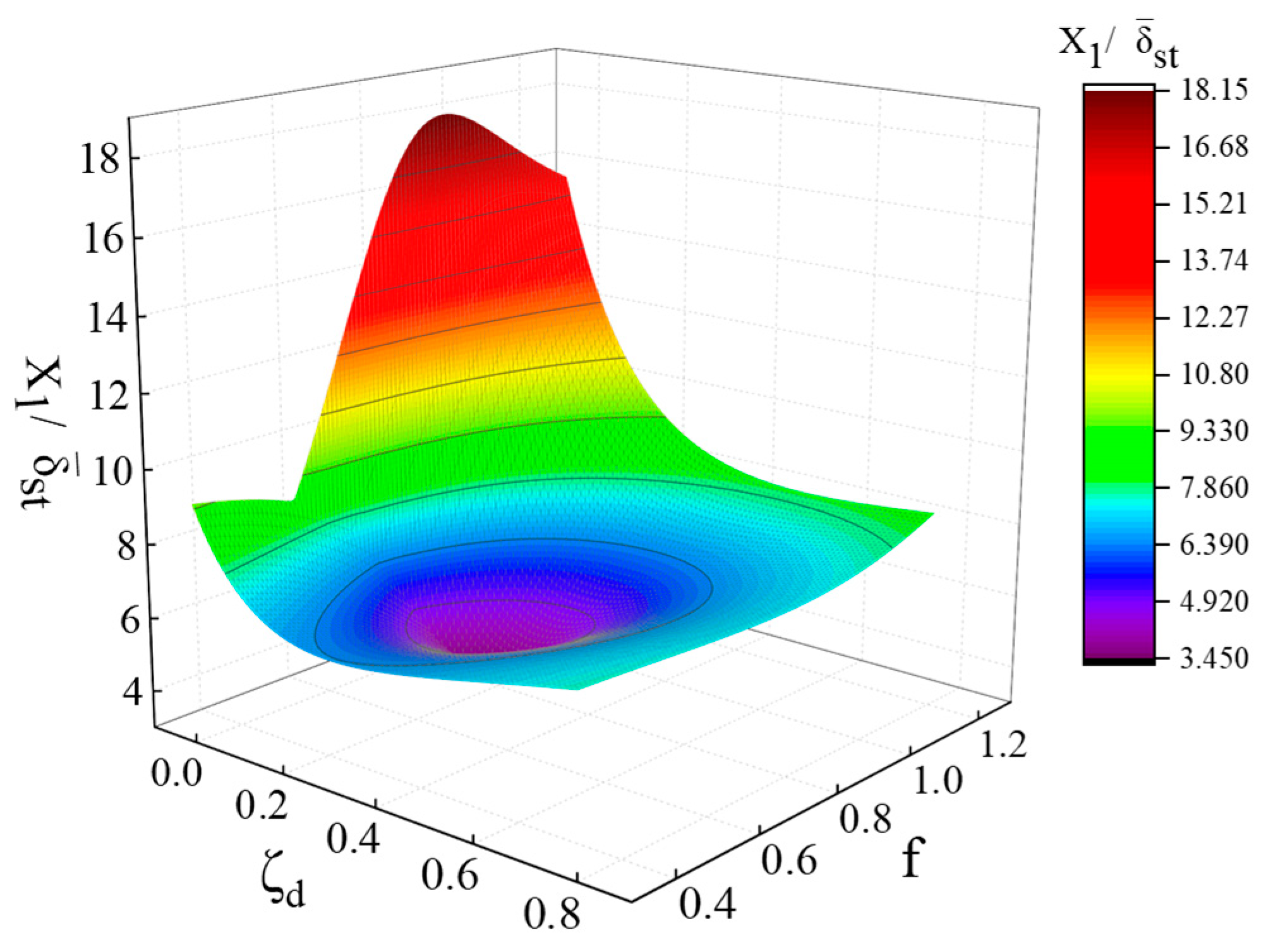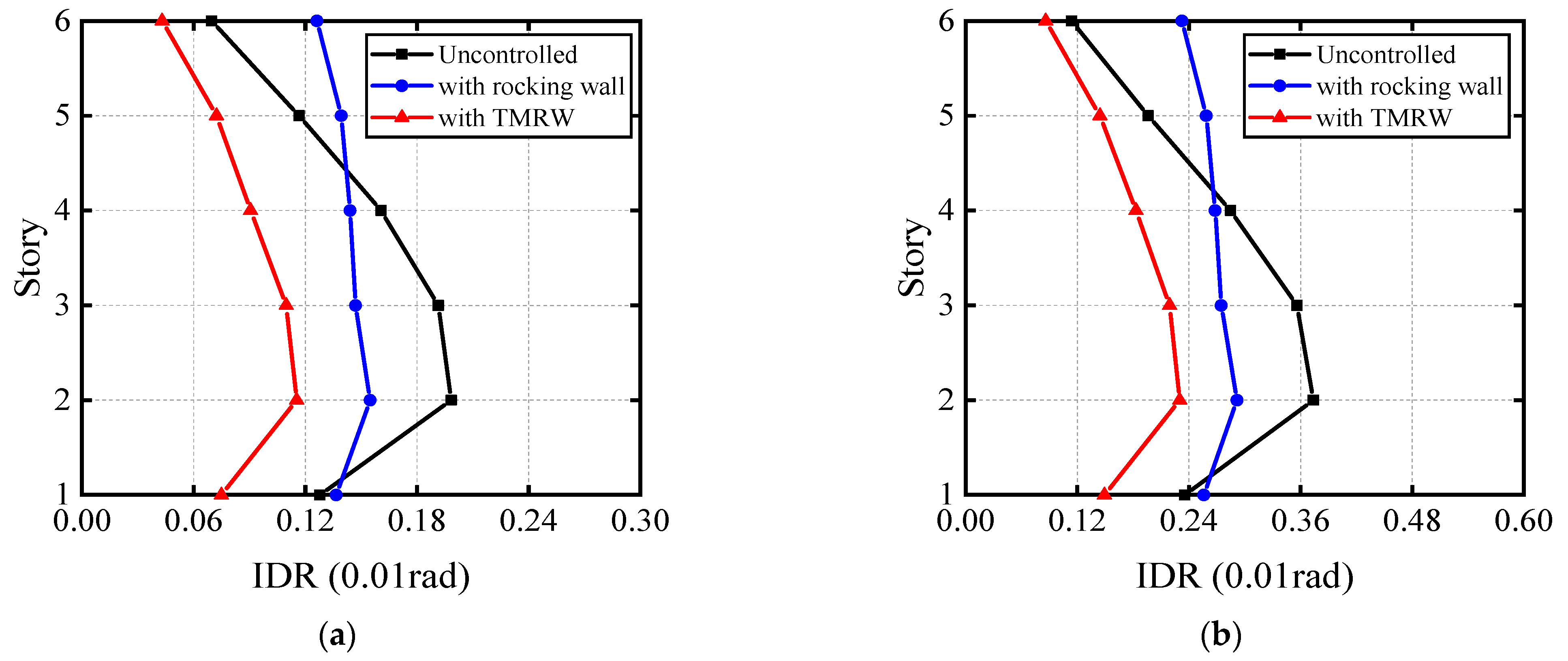As shown in
Figure 1, the rocking wall can create a uniform distribution of story drift with the large stiffness of horizontal connections. The TMRW-frame structure, a new structural system, is developed from the traditional rocking wall-frame structure. According to the frequency ratio design, the mass of the rocking wall and the stiffness of horizontal connections in
Figure 1 are reasonably selected. When the vibration occurs, TMRW can absorb the vibration energy of the structure by resonating with the controlled vibration mode of the host structure. Therefore, the energy dissipation capacity of the rocking wall can be greatly improved after being correctly designed.
2.1. TMRW-1 Control with No Damping
Beams, columns, walls, and other components in the frame structure contribute to the energy dissipation, inertial, and elastic properties of the structure. After the controlled mode of the structure is determined, the frame structure can be simplified into an SDOF structure and each of the above properties is respectively concentrated in the damping, mass, and stiffness components. Hinged at the base, the rocking wall is connected with the SDOF structure by a link with a certain stiffness. Unconsidering the damping, the controlled system in
Figure 2 consists of a mass block, springs, and a hinged rocking wall.
Under the external excitation, the dynamic equations of the TMRW-1 mechanism are given as
where:
the main mass;
the moment of inertia of the TMRW, ;
the main spring stiffness;
the spring stiffness of the TMRW;
the structural height;
the force acting on the main mass with the same direction as . Under harmonic main mass excitation, . In case of harmonic base excitation with acceleration , it is given as .
the force acting on the rocking wall with same direction as
. It is given as
The steady-state solutions of
and
can be assumed
Using above Equations (3) and (4), we can derive the displacement amplitudes of the structure when subjected to a harmonic main mass excitation
To facilitate further discussion, we introduce the following notations
the ratio of TMRW mass to main mass, ;
the natural frequency of main mass, ;
the natural frequency of TMRW mass, ;
the frequency ratio, ;
the harmonic excitation frequency;
the ratio of excitation frequency to the natural frequency of , ;
the static displacement of main mass under , ;
the static displacement of main mass under , .
Using the above parameters, we can rewrite Equation (5) to obtain the dynamic amplification factor of the main mass.
When the numerator in the above formula is zero, the amplitude of the main mass is equal to zero, so there is
When the structure works under resonance,
, the expression for calculating the stiffness parameter is given as
Using Equations (3) and (4), we can also derive the amplification factor of the main mass when subjected to harmonic base excitation.
The corresponding expressions for calculating TMRW parameters can be given as
2.2. TMRW-2 Control with Damping
In the actual vibration system, the structure always has a certain amount of damping. Considering the presence of structural damping, the schematic model of TMRW-2 is shown in
Figure 3.
Referring to
Figure 3, the equations of motion for the TMRW-2 mechanism are
where
is the main mass damping;
is the TMRW damping.
The steady-state solutions of displacement can be assumed
Substituting above Equations (14) and (15) into Equations (12) and (13), the displacement amplitude of the main mass when subjected to a harmonic main mass excitation is determined by
For brevity, additional symbols are introduced as follows
the damping ratio of main mass, ;
the damping ratio of TMRW, .
Using the symbols above and Equations (16)–(18), the amplification factor of the main mass is given as
In Equations (19) and (20), each parameter influences the dynamic amplification factor, thereby no analytical solution can be derived. However, some numerical methods can be adopted to obtain the optimal parameters of TMRW [
15,
16,
17]. In this paper, the numerical search is based on a min-max approach. When the parameters
and
are determined, many combinations of parameters
and
are systematically considered until the peak response (P
1 or P
2,
Figure 4) reaches a minimum. Since little damping exists in the real structure, the frequency ratio in Equation (9) gives a good starting value. After a numerical search, the peak surface of the amplification factor is shown in
Figure 5. The lowest point of the peak surface corresponds to the case where vibration response is optimal. This optimal point yields
and
.
To facilitate the design of a TMRW considering structural damping, the design table has been developed. Using the optimal parameters in
Table 1, the optimal stiffness and the optimal damping can be calculated as
For the case when the TMRW-2 mechanism is subjected to a harmonic base excitation, the corresponding amplification factor of the main mass is given as
Figure 6 and
Table 2 show the corresponding peak surface of the amplification factor
and design table for obtaining TMRW parameters.
2.4. Design Example
In the case of a harmonic base excitation, a TMRW is designed for a damped SDOF structure. Under moderate earthquakes, the related design problem of controlling a multi-degree-of-freedom structure with a dominant first-order mode will be similar to the problem discussed here.
Following
Figure 3, a linear system is assumed to have the following characteristics
If the TMRW mass is taken to be 40% of the main mass, then
Using the above known values of
and
, the optimal TMRW parameters can be obtained from the min-max approach, or more easily from the design
Table 2. One obtains
Using
and Equations (21) and (22), the optimal parameters for stiffness and damping are found to be
Thus, all three parameters (mass, stiffness, and damping coefficient) of the TMRW are now known. And these complete the design of the TMRW which controls the natural mode of an SDOF structure.




















